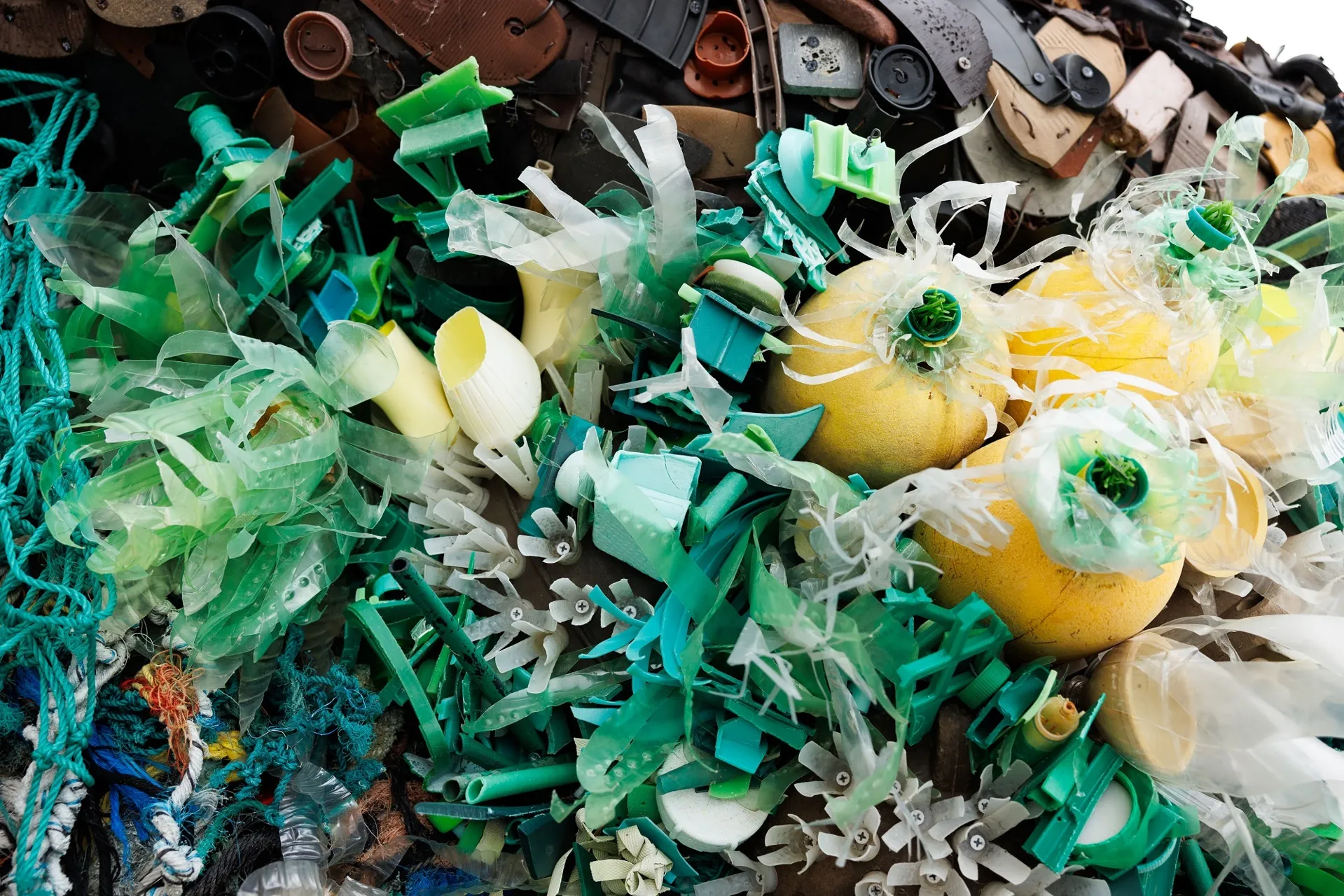Chattanooga, Tenn. (April 11, 2022) – Walking along the beach, it can be all too easy for the multitude of straws, eating utensils, flip flops, discarded sand toys and other plastic waste to all but disappear into the background.
But a six-foot-tall seahorse sculpture MADE of this litter? That’s a little harder to ignore.
From Saturday, April 16, through Sunday, Oct. 30, more than one dozen artistic installations of aquatic animals made out of recovered plastic debris will be exhibited throughout the campus of the Tennessee Aquarium and IMAX 3D Theater. The Washed Ashore exhibit is presented by the Tennessee Department of Transportation’s Nobody Trashes Tennessee litter prevention campaign with additional support from Unum.
Each colorful work was meticulously crafted by artists with Oregon-based nonprofit Washed Ashore using actual recovered litter to raise awareness of the threat water-borne plastic pollution poses to aquatic life.
With their whimsical depiction of jellyfish, seahorses, otters, sharks and other animals, Washed Ashore’s works are eye-catching and thought-provoking. Capturing the public’s attention is the first step in the process, but it’s the details revealed upon closer inspection — colorful, plastic trowels used as fish scales; dangling strings of water bottles serving as jellyfish tentacles — that highlight the need to address rampant plastic waste, says Brad Parks, Washed Ashore’s conservation education director.
“I like to say it’s an ugly problem with a beautiful solution,” Parks says. “Seeing them from afar is one really remarkable experience. Getting up close to see those individual items and recognize those things we have in our daily lives is also exceptional.
“Those things make these sculptures even more relevant because we all use plastic items in our lives every day, as hard as you might try to avoid it. The point of the message is to make everyone aware of the problem and work to reduce our impact on the planet by eliminating single-use plastics in our lives, recycling and repurposing other plastic items so we can use them over and over, and properly disposing of anything else.”
Every year, mankind produces about 300 million pounds of plastic, less than 10 percent of which is recycled. Much of that un-repurposed material languishes in landfills or is blown or washed into waterways, where it eventually makes its way to the ocean.
According to the Tennessee Department of Transportation (TDOT), at any given time, there are more than 100 million pieces of litter on Tennessee’s roadways, which can pose a threat to both land and aquatic animals.
“The connections between roadside litter, water quality and aquatic systems cannot be overstated,” says Denise Baker TDOT’s transportation program supervisor. “Since visible litter studies began in Tennessee, TDOT and its many community partners have been effective at decreasing the amount of roadside litter, but there’s still a lot of work to be done.
“By continuing our work with the Tennessee Aquarium and other organizations, we can get more people of all ages excited about cleaning up the litter that already exists and preventing more litter from piling up across the state of Tennessee.”
TDOT initiated the Nobody Trashes Tennessee campaign and is partnering with organizations like the Aquarium to actively engage people to join in an anti-littering push that will greatly benefit our natural treasures. By supporting the Washed Ashore exhibit, Aquarium guests will be captivated by the colorful creatures during their visit and then head home to consider ways they can join the effort to improve the environment.
Unum is also supporting bringing this art exhibition to Chattanooga. Like a message in a bottle, the plastic debris that washes ashore is also signaling a growing concern for human health.
“Unum is proud to sponsor the Washed Ashore Art Exhibit because environmental protection and preservation of our oceans, rivers and beaches is an important part of building a thriving, healthy community,” says Liz Ahmed, Unum’s Executive Vice President of People and Communications. “It is great to have an exhibit like this to highlight the importance of recycling and sustainability efforts.”
The Washed Ashore sculptures Aquarium guests can see during their visit or while exploring the plaza and city park surrounding the Aquarium include:
- Seemore the Sea Lion Pup (plaza)
- Sylvia the Silvertip Shark (plaza)
- Lemon Zest Jelly (Ocean Journey)
- Giacometti the River Otter (River Journey)
- Flip Flop Fish (River Journey)
- Fish Bite Fish (IMAX)
- Stella the Seahorse (Ocean Journey)
- Jelly Bloom (Ocean Journey)
- Sea of Debris Collage (Ocean Journey)
- Plastic Tribe (River Journey, IMAX)
- Pinky Wallfish (Ocean Journey)
- Noah Wallfish (Ocean Journey)
- Shoefish Wallfish (Ocean Journey)
- Annie the Anemone (Ocean Journey)
In addition to the works created by Washed Ashore, guests exploring the Discovery Hall gallery on the third floor of the River Journey building will encounter a sculpture of a Southern Appalachian Brook Trout. This enormous work was made by Aquarium employees out of plastic items collected internally last summer and fall.
It’s not unheard of for Washed Ashore to inspire artistic action in addition to spurring a desire to safeguard and scour waterways, Parks says.
“It’s that type of spark that I love Washed Ashore brings when it comes to an organization,” he says. “We’ve seen schools create similar works and all sorts of community projects or sustainability measures come up around this. Those are all wonderful things we love to see.”
Access to view Washed Ashore artwork installed in the Aquarium is included with Aquarium admission. Works installed outside the Aquarium may be enjoyed for free.
For more information about Washed Ashore, visit washedashore.org/
Learn more about Tennessee’s litter reduction and education effort and how to join at NobodyTrashesTennessee.com
